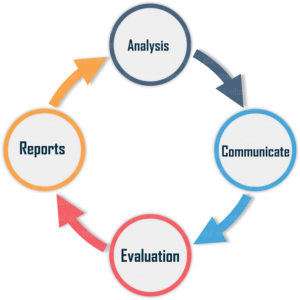Selenium Course
- 64k Enrolled Learners
- Weekend/Weekday
- Live Class
In software projects, it is extremely important to measure the quality, cost, and effectiveness of the project and the processes. Without measuring these, a project can’t head towards successful completion. So, in this article, we are going to learn about software testing metrics.
Let us have a look at the agenda below:
We shall begin!
Software Testing Metrics is defined as a quantitative measure that helps to estimate the progress and quality of a software testing process. A metric is defined as the degree to which a system or its component possesses a specific attribute.
After this simple explanation, let us understand the importance of software metrics.
Software testing metrics is important due to several factors. Well, I have listed a few of them below:
● It helps you to take a decision for the next phase of activities
● It is evidence of the claim or prediction
● It helps you to understand the type of improvement required
● It eases the process of decision making or technology change
Well, in these simple points you have got an overview of the importance of testing metrics, let us move towards our next segment. There are different types of metrics. Here they are!
Enlisting them below:
● Process Metrics
● Product Metrics
● Project Metrics
Process Metrics: It is used to improve the efficiency of the process in the SDLC (Software Development Life Cycle).
Product Metrics: It is used to tackle the quality of the software product.
Project Metrics: It measures the efficiency of the team working on the project along with the testing tools used.
After understanding different types of metrics, let’s look at the life cycle of software testing metrics:

Analysis: It is responsible for the identification of metrics as well as the definition.
Communicate: It helps in explaining the need and significance of metrics to stakeholders and testing team. It educates the testing team about the data points that need to be captured for processing the metric.
Evaluation: It helps in capturing the needed data. It also verifies the validity of the captured data and calculates the metric value.
Reports: It develops the report with an effective conclusion. It distributes the reports to the stakeholders, developers and the testing teams.
Now that we have grasped the concept of life cycle, let us move ahead to understanding the method to calculate test metrics.
Here is a method to calculate software test metrics:
There are certain steps that you must follow.
1. Firstly, identify the key software testing processes to be measured
2. In this step, the tester uses the data as the base to define the metrics
3. Determination of the information to be followed, a frequency of tracking and the person responsible for the task
4. Effective calculation, management, and interpretation of the metrics that is defined
5. Identify the areas of improvement depending on the interpretation of the defined metrics
With this, we have come to the end of this article.
Now that you have understood Metrics in Software Testing, check out the Software Testing Fundamentals Course by Edureka. This course is designed to introduce you to the complete software testing life-cycle. You will be learning different levels of testing, test environment setup, test case design technique, test data creation, test execution, bug reporting, CI/CD pipeline in DevOps, and other essential concepts of software testing.
Got a question for us? Please mention it in the comments section of this blog and we will get back to you as soon as possible.
 Thank you for registering Join Edureka Meetup community for 100+ Free Webinars each month JOIN MEETUP GROUP
Thank you for registering Join Edureka Meetup community for 100+ Free Webinars each month JOIN MEETUP GROUPedureka.co